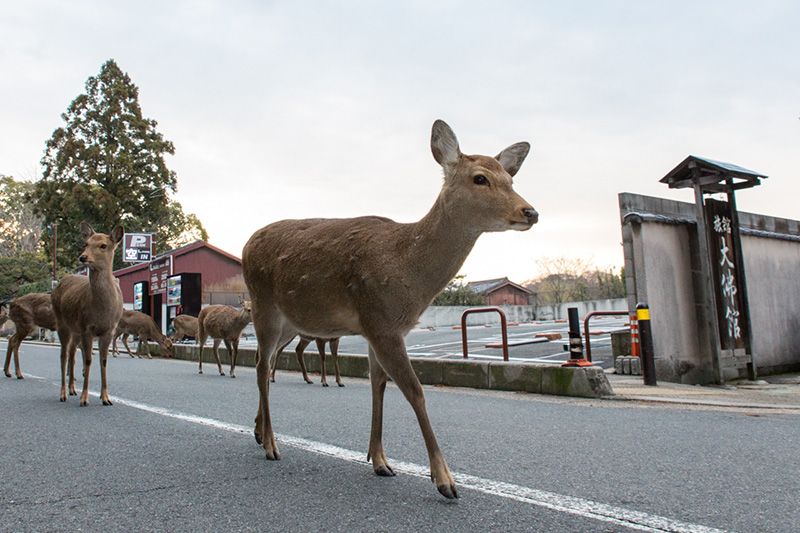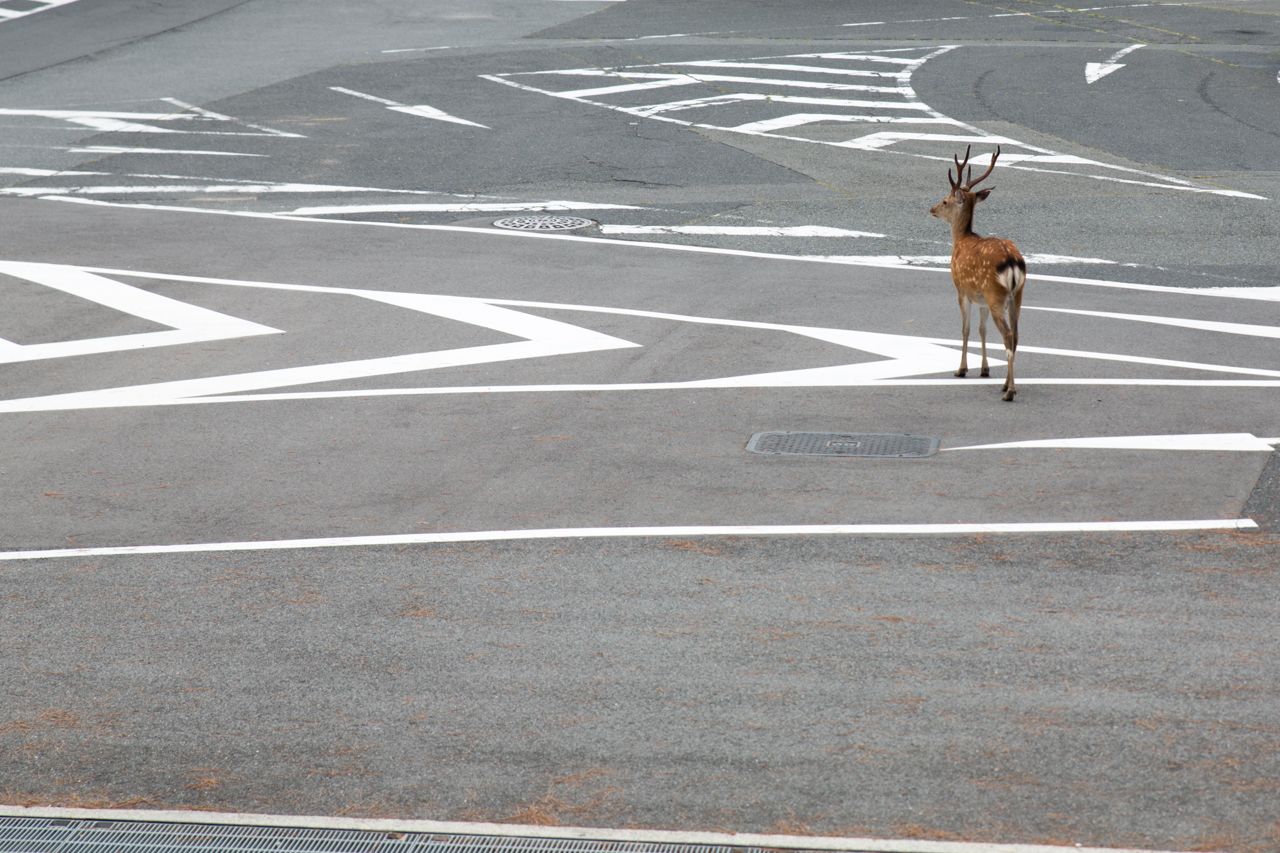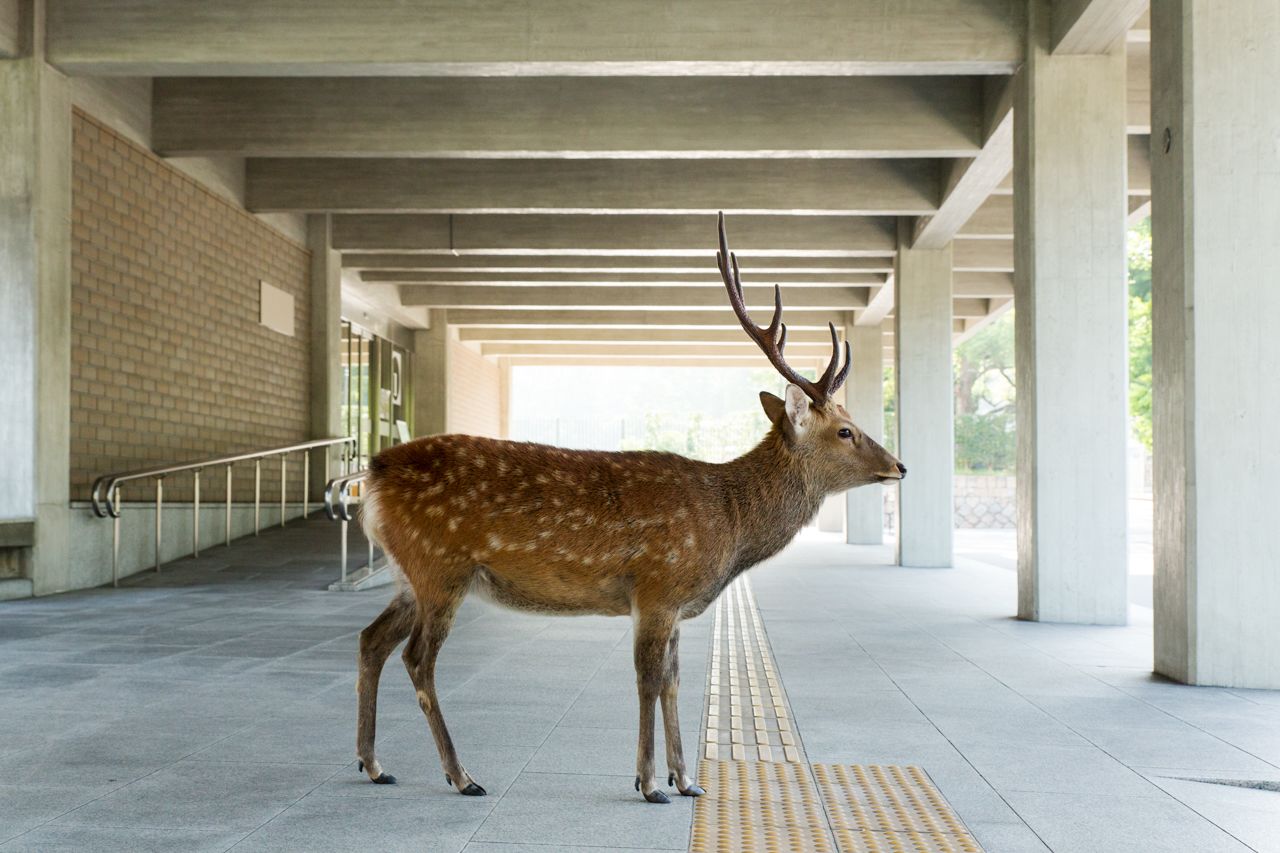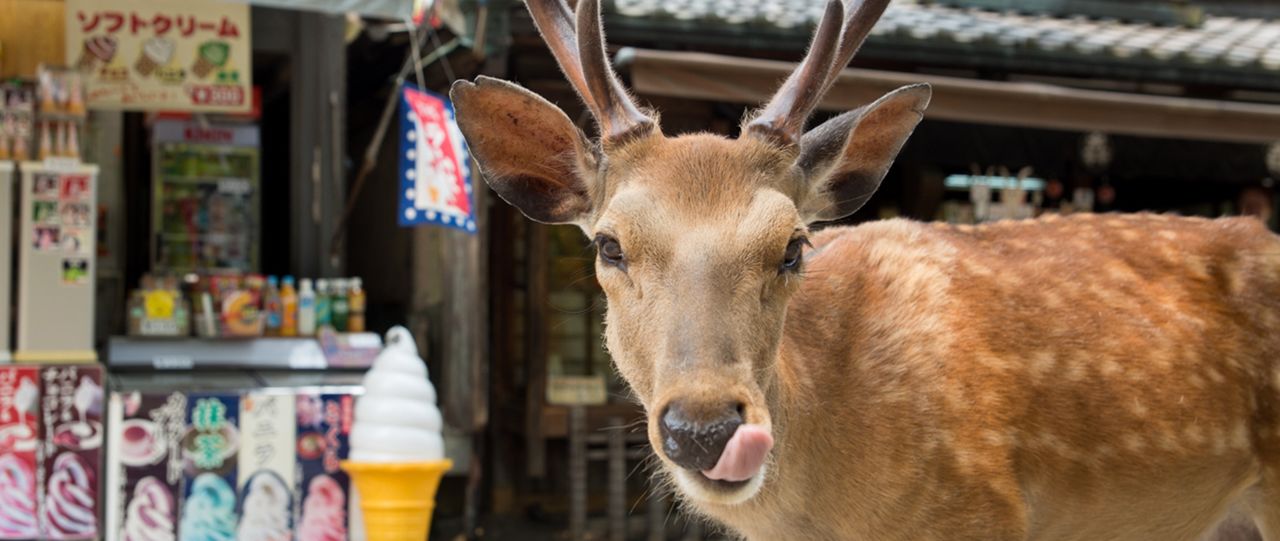
Ancient Messengers: The Timeless Deer of Nara (Photos)
Culture- English
- 日本語
- 简体字
- 繁體字
- Français
- Español
- العربية
- Русский
Just Us Deer Here
On March 24, 2011, I stumbled upon a seldom-seen side of Nara’s famous deer population. I was visiting the ancient city for work, but I thought I would head out and snap a few photos in my spare time. It was still early, well before any tourists would be about, so I grabbed my camera and headed outside. As I wandered along, I discovered among the urban landscape unexpected scenes such as two deer nonchalantly standing in an intersection, a pair of bucks locking horns in combat, and a small herd of hoofed marauders parading down the street. It was as if the deer had become the lone inhabitants of the city.
I visited Nara two weeks after the devastating earthquake and tsunami that killed over ten thousand people and ravished the northeast coast of Japan. As humans, we are susceptible to hubris. We assure ourselves that we are masters of the realm, and in the name of progress and development we have carved out whole mountainsides and filled in vast stretches of the coastline. But with a shrug of her shoulder nature in an instant reasserted her dominance, sweeping away homes, factories, roads, and ports. Then the dream of an endless supply of cheap energy died when the man-made apparatus harnessing the atom melted, turning once fertile fields into desolate wastelands.
My mind was heavy with these thoughts when the deer intervened, providing a welcome respite with their charming antics.
Nara’s deer are considered heavenly messengers of the grand Kasuka Shrine and are honored with the name shinroku, a title combing the kanji for god (神) and deer (鹿). These hooved nomads have wandered the lanes and avenues of Nara since it was the nation’s capital some 12 centuries ago. Currently the deer population of Nara is around 1,200. Most of these call Nara Park and surrounding areas home.
The deer generally follow a relaxed routine of nibbling grass and whimsically wandering the city’s thoroughfares. It starts early with groups of animals emerging from their nighttime abode in the woods behind the Kasuga Shrine, from where they meander across empty intersections to the stomping grounds in the center of town. After a busy day of trimming and fertilizing the park’s lawns and ruminating while chewing their cud, they retrace their steps in the evening and once again retire in the woods.
Divine Pests
Japan’s relationship with deer has shifted over the years as populations around the country have grown. Faced with mounting damage to agricultural products, municipalities in different prefectures have introduced measures to reduce herd numbers. In 2013 hunters killed close to 180,000 deer, with an additional 340,000 animals culled as pests. Much of the meat from this latter group, however, was not consumed and was either buried or incinerated.
This is a stark contrast to the pampered deer of Nara that lazily spend their days getting fat on crackers handed out by the city’s many tourists. It is easy to recognize in the opposing fates of the Nara deer and their mountain-dwelling cohorts the self-serving and contradictory tendencies of humans to arbitrarily favor one over another.
We wage wars over lofty principles that merely end in destruction and create technologies we are unable to control, destroying the very environment that sustains us. This can only continue for so long before humans disappear from the earth all together.
If that day ever comes, I imagine the deer in Nara will appear as always from their wooded hiding place to amble through the empty streets. I have tried in my work to construct a hint of such a world without people from the swaggering herds around Nara Park. As a photographer, I hope the images of these ancient envoys will provide viewers a message to inspire them toward realizing social change.
(Originally published in Japanese on February 1, 2017. Photographs and text by Ishii Yōko.)
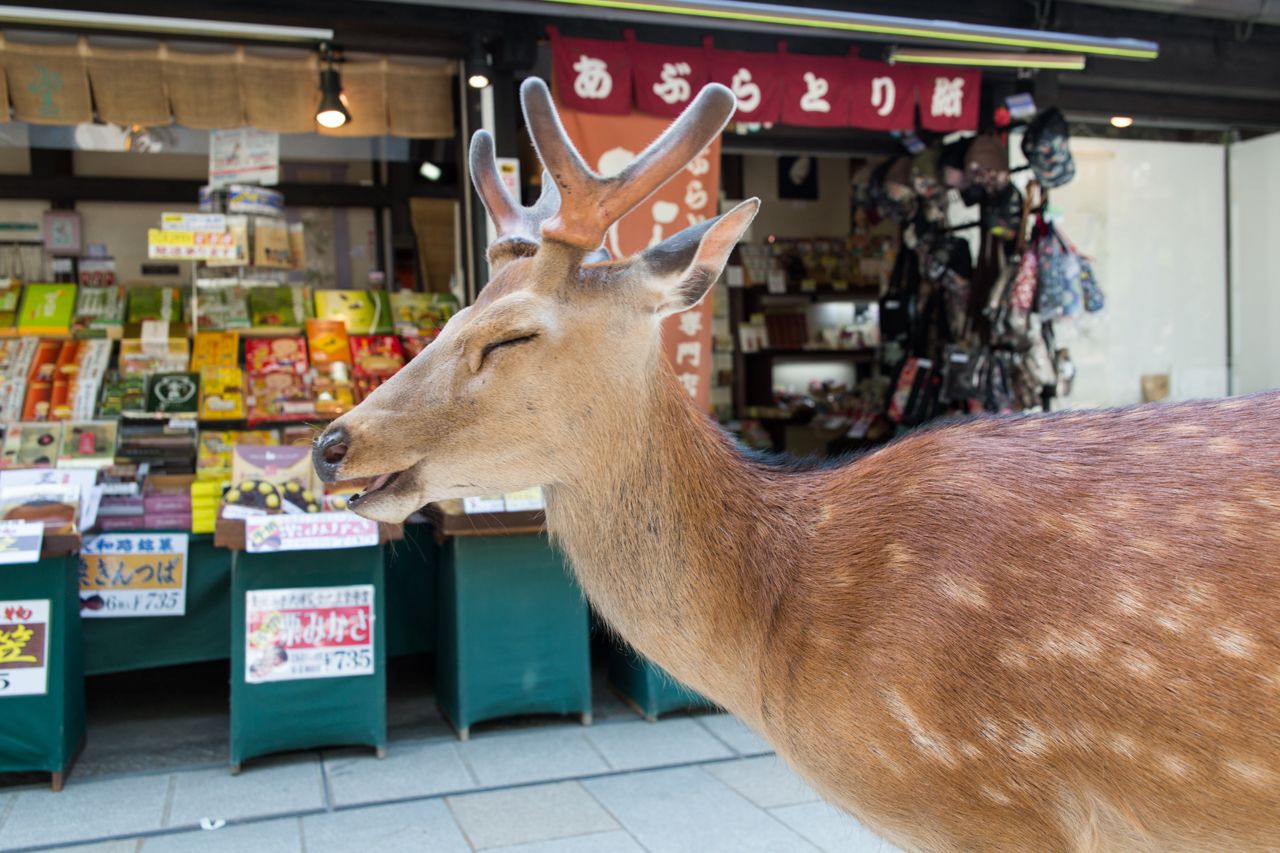
On the road approaching the Tōdaiji Daibutsu (Great Buddha) Hall.
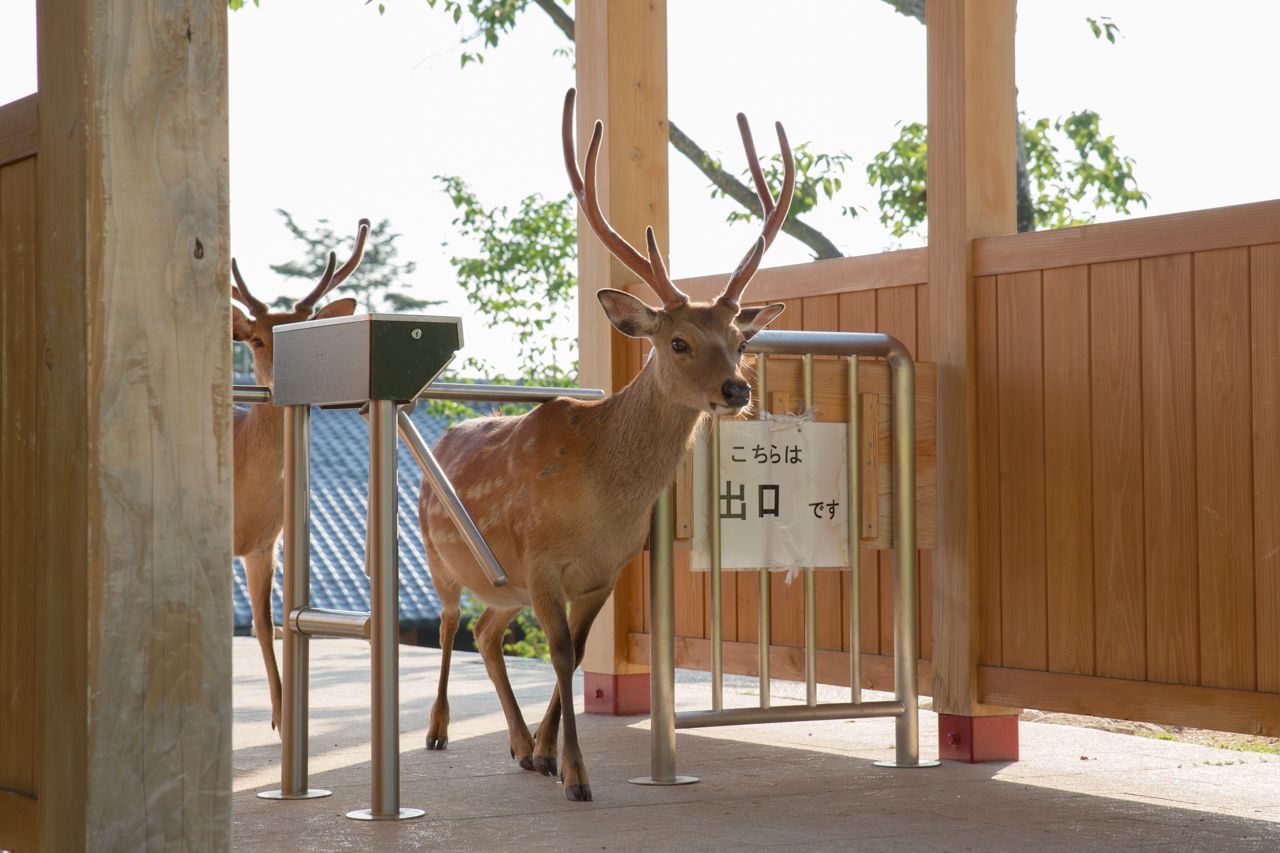
At the gate of the Mount Wakakusa walking trail.
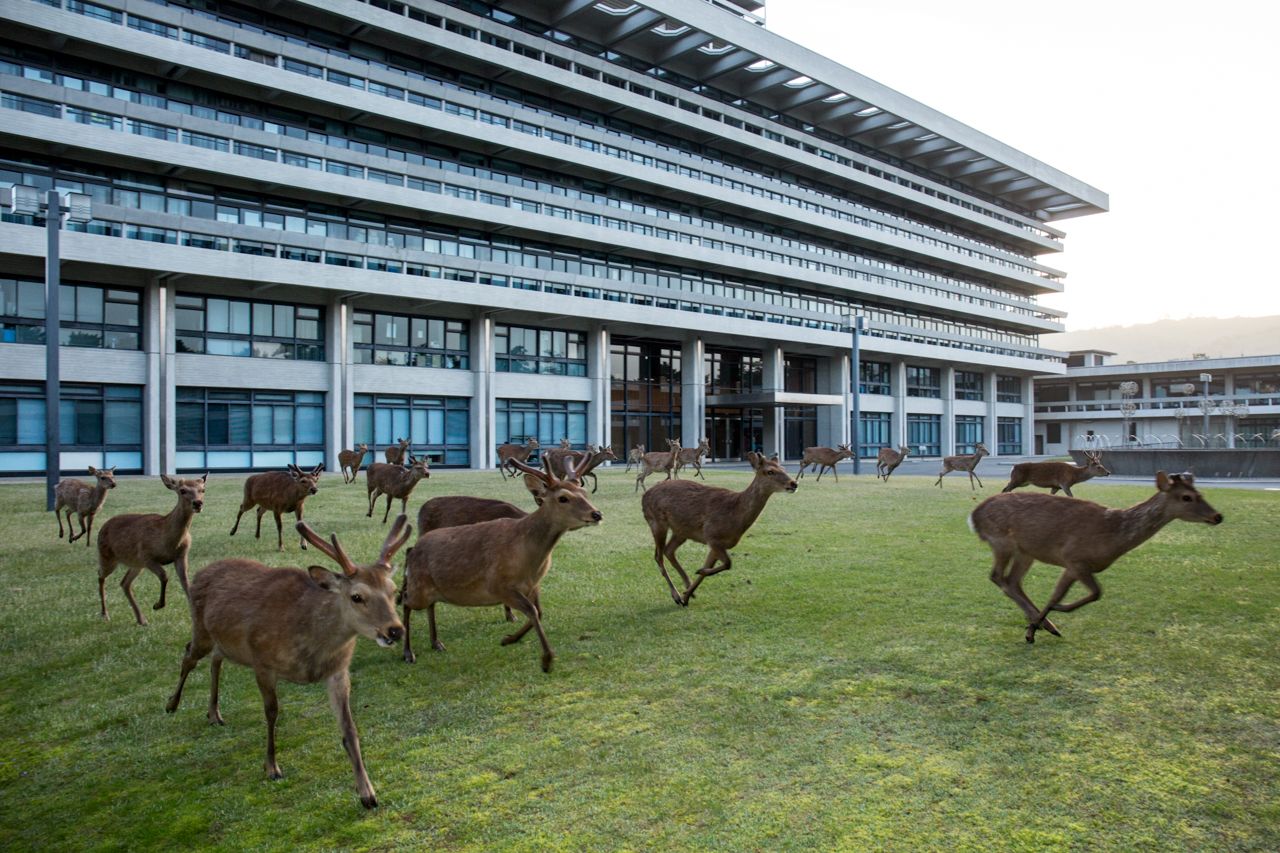
On the lawns of the Nara Prefectural Office.
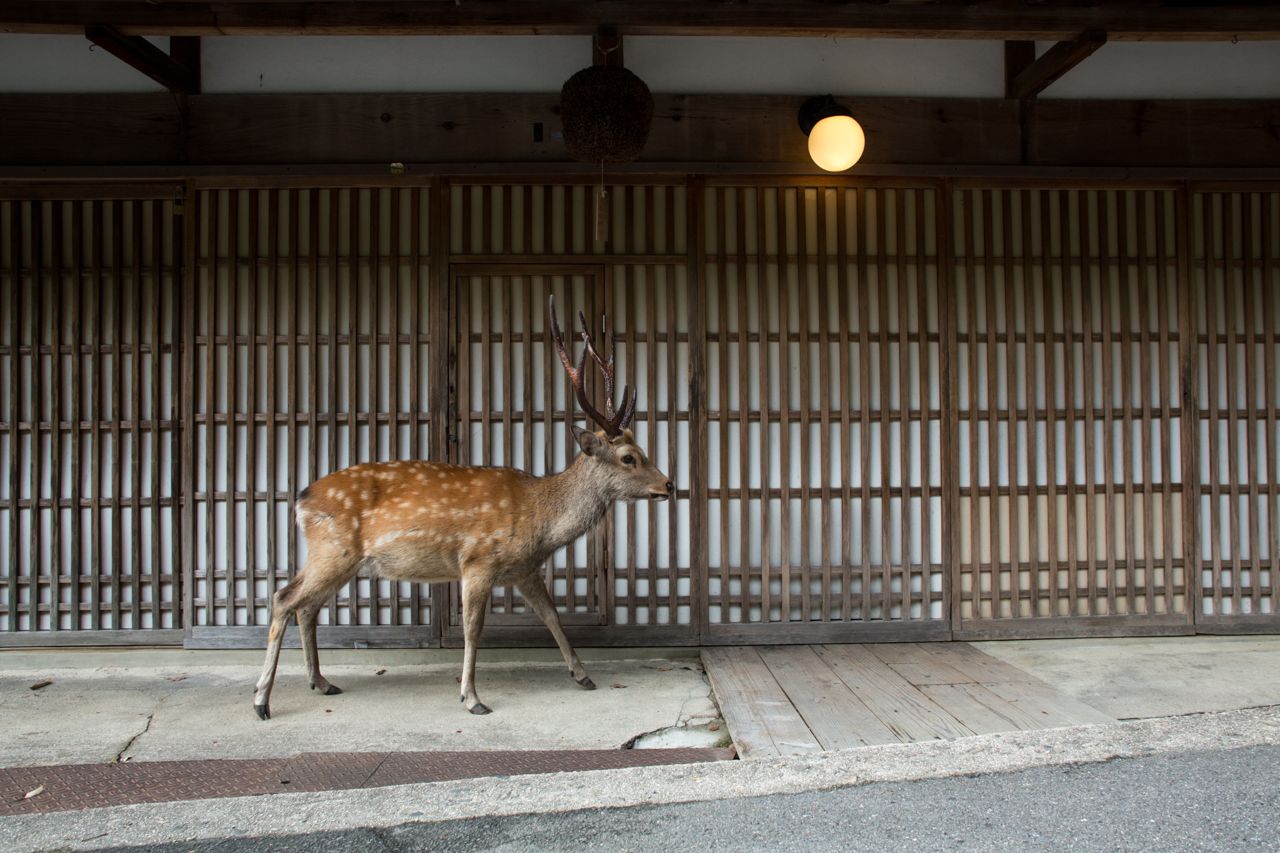
On a road at the bottom of Mount Wakakusa.
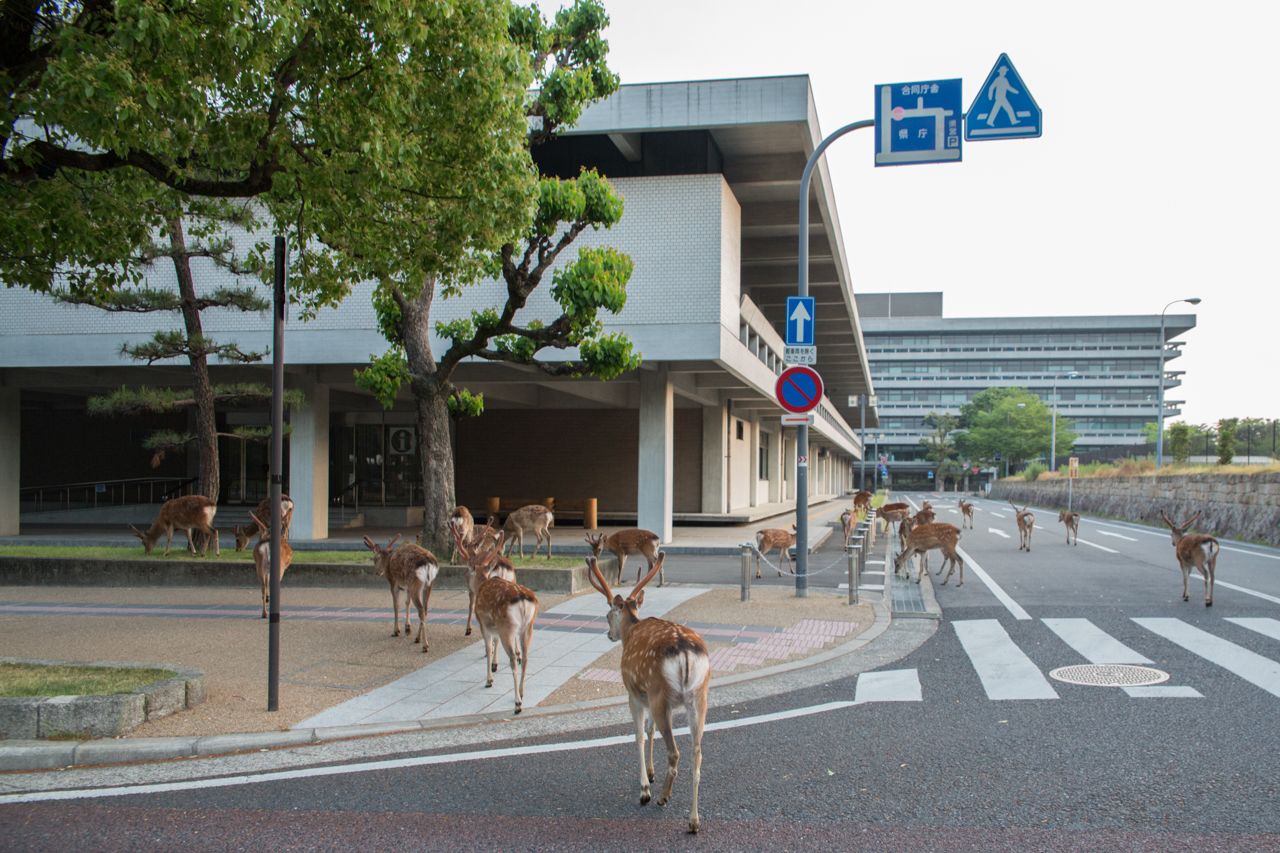
Outside the Nara Prefectural Office.
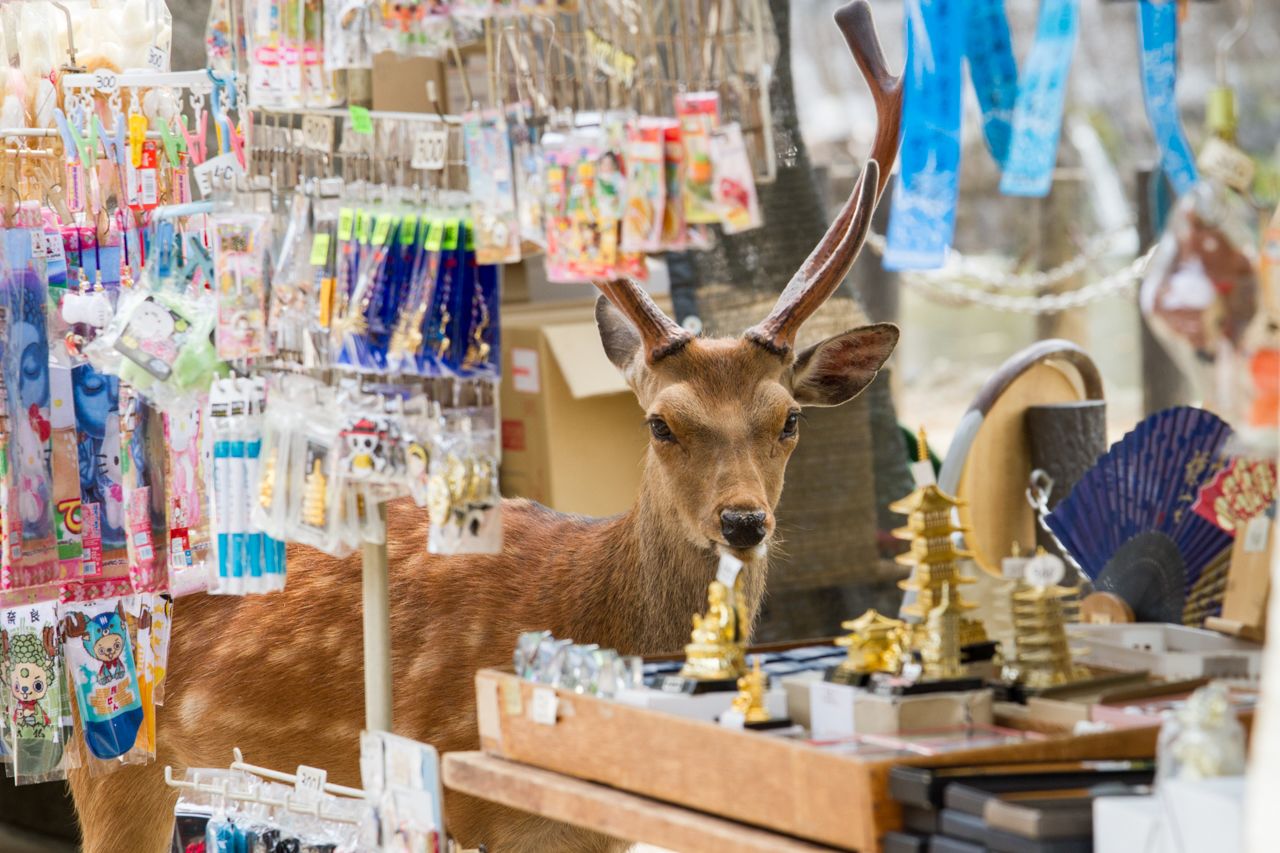
On the road in front of the Tōdaiji Daibutsu (Great Buddha) Hall.
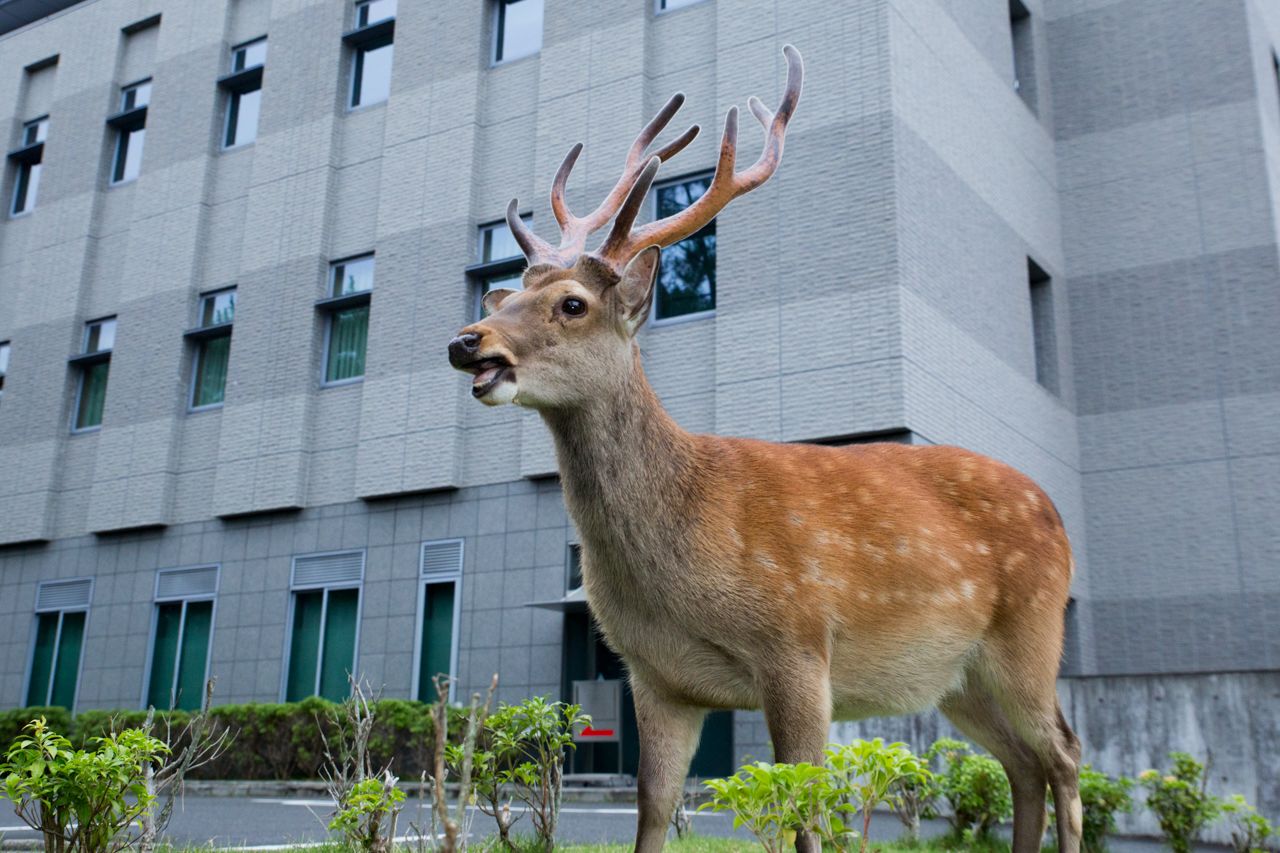
Next to the Nara District Court Building.
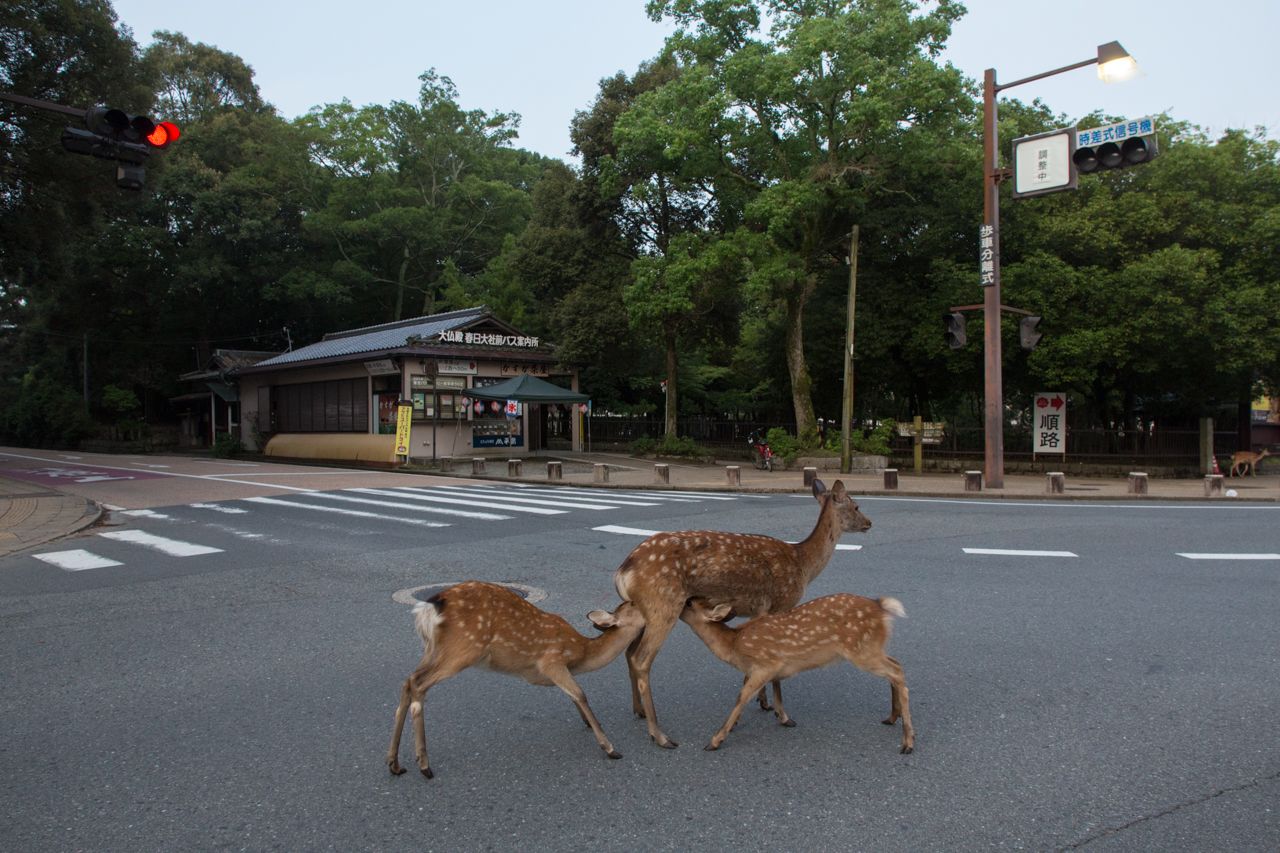
At the intersection in front of the Tōdaiji Daibutsu (Great Buddha) Hall.
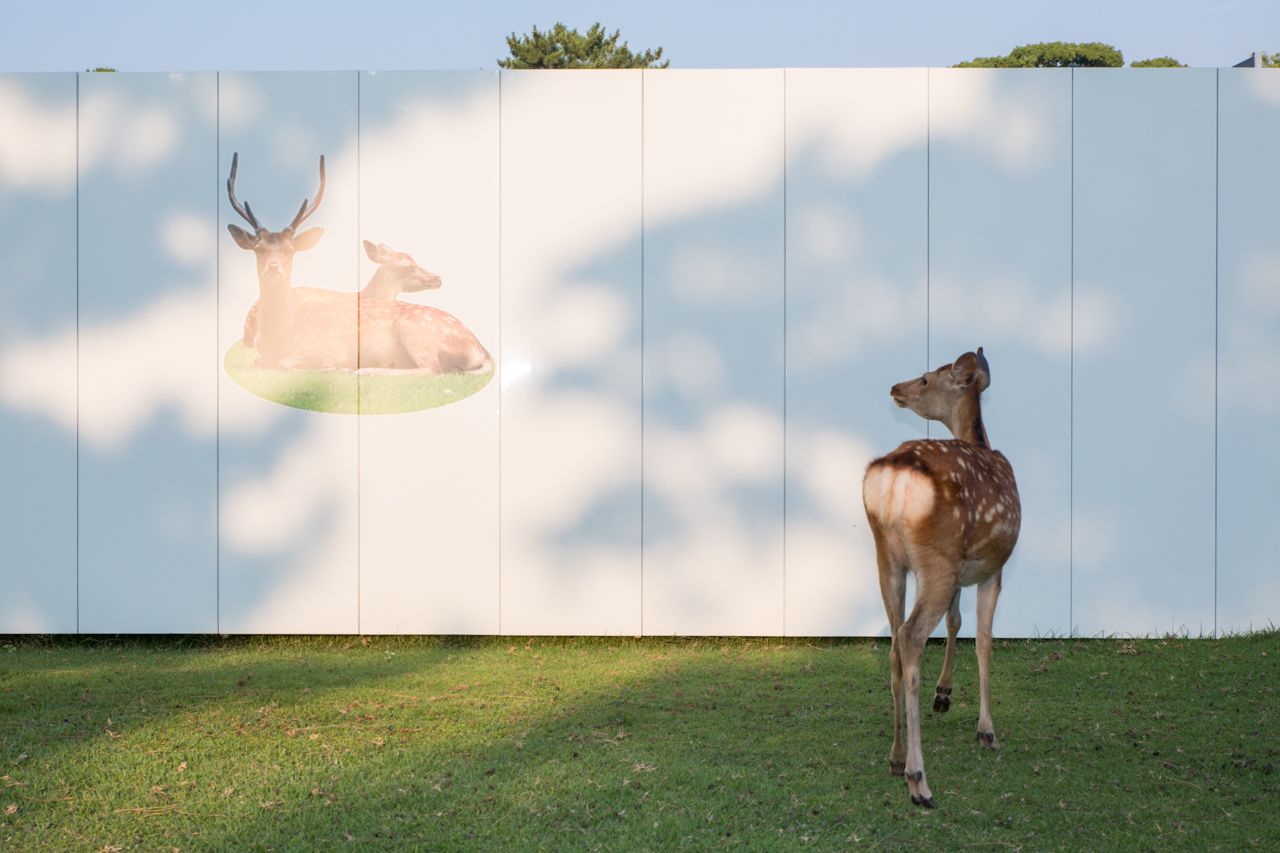
Outside a construction site in Nara Park.
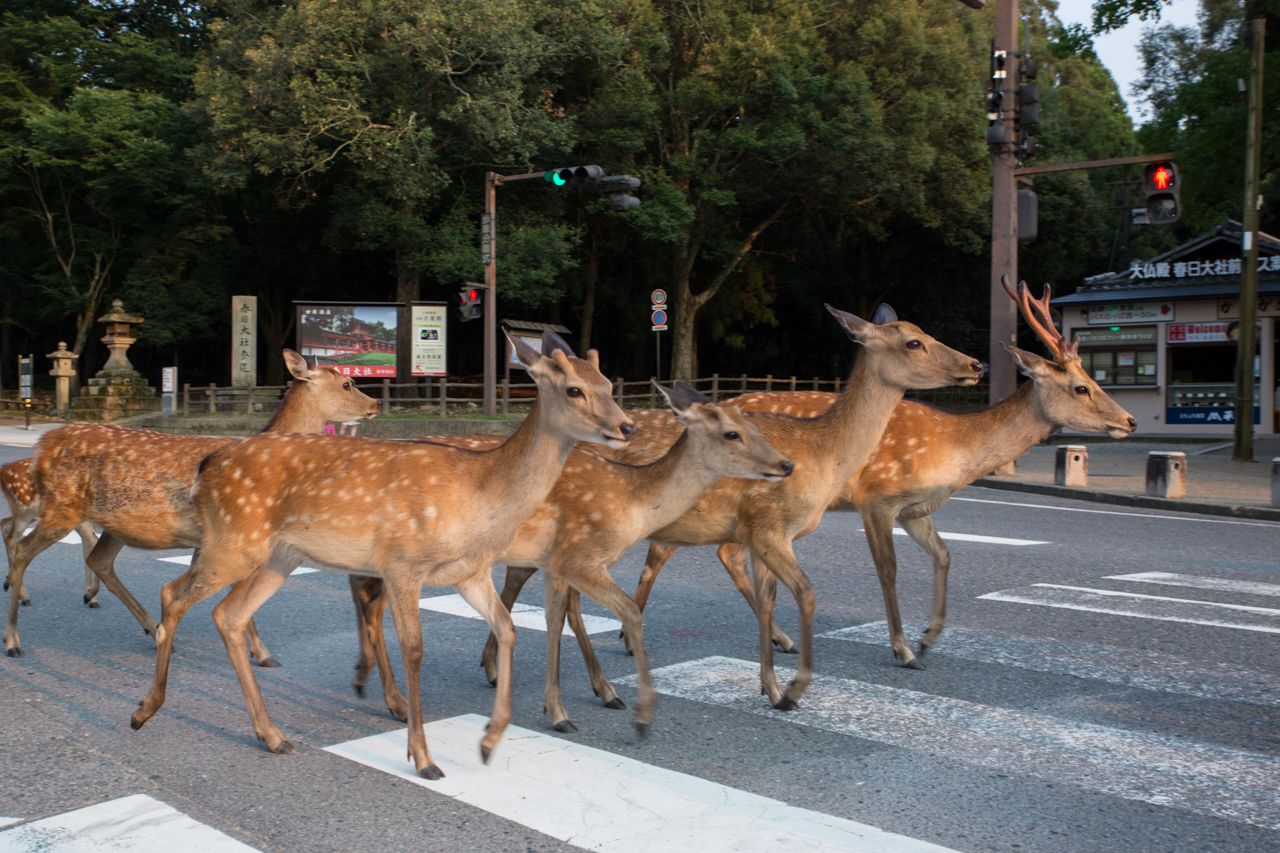
At the intersection in front of the Tōdaiji Daibutsu (Great Buddha) Hall.
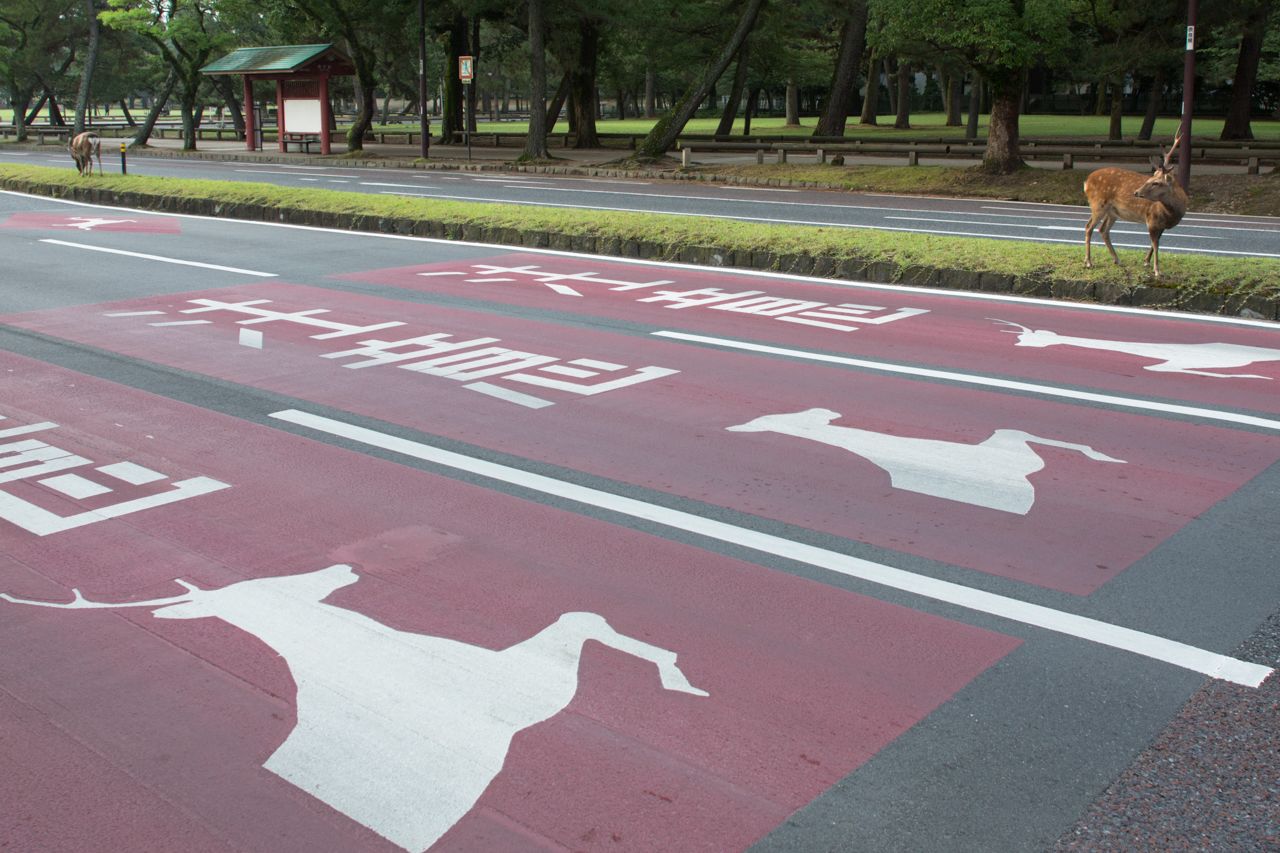
On a road in front of the Nara Prefectural Office.
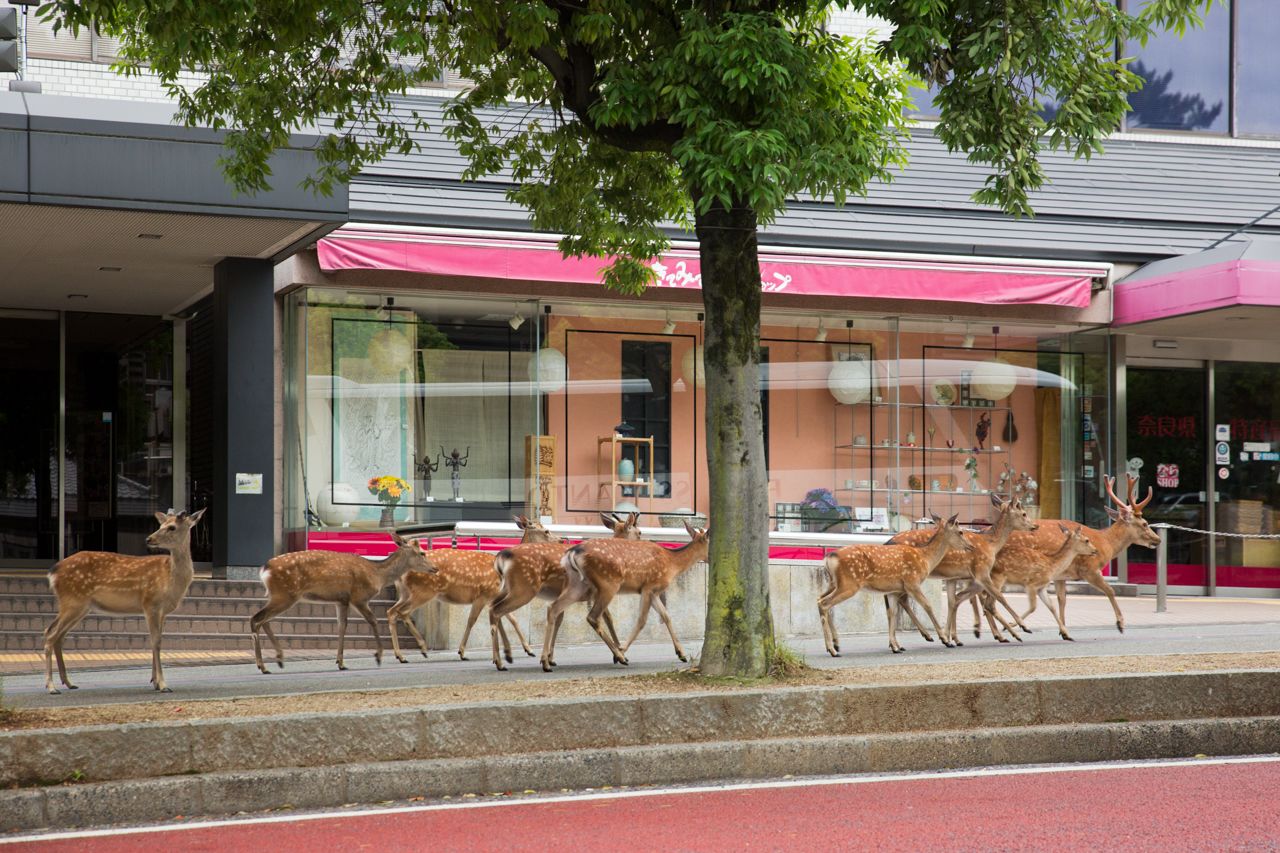
Outside the Nara Prefectural Small Business Association Building.
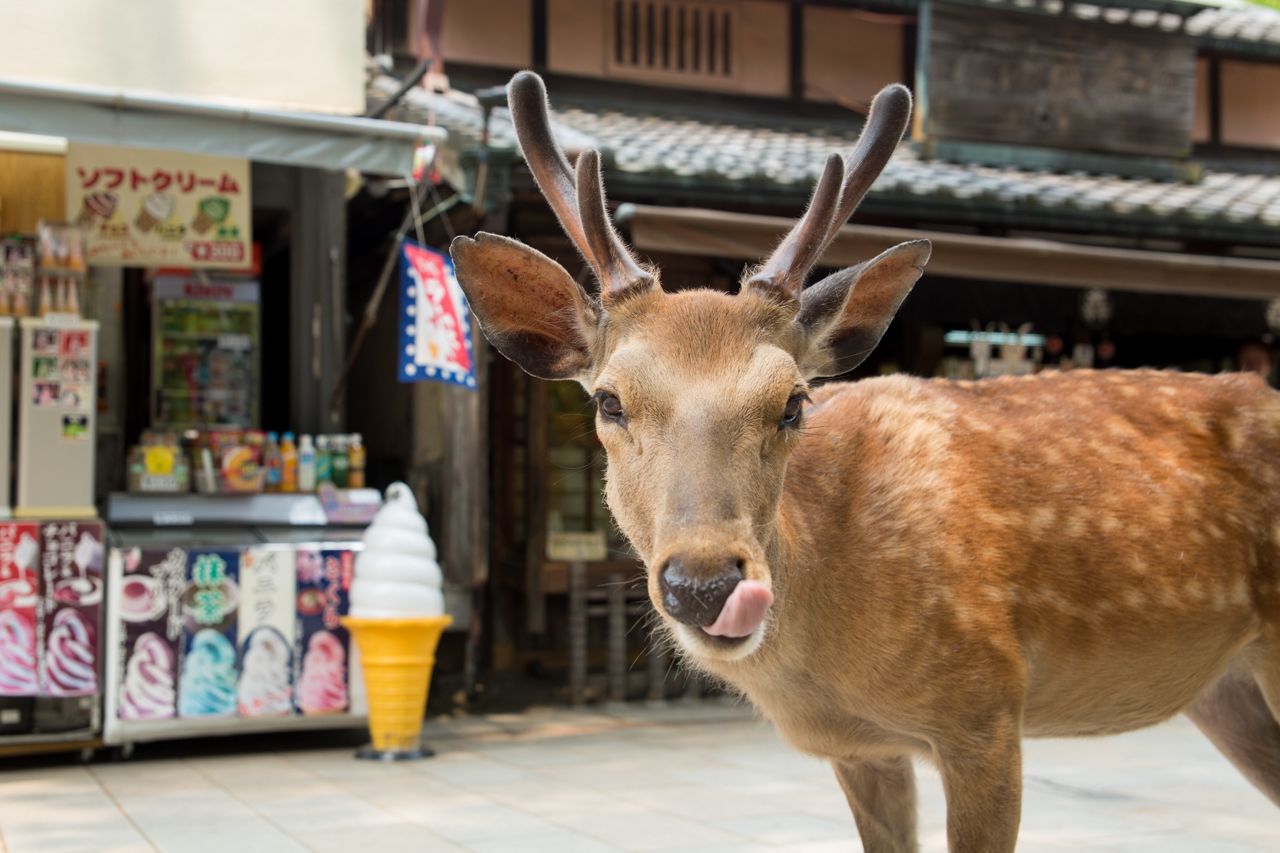
On the road approaching the Tōdaiji Daibutsu (Great Buddha) Hall.
tourism disaster photographer shrine 3/11 Kansai Nara animal Japanese deer photo park Kasuka Shrine Nara Park
